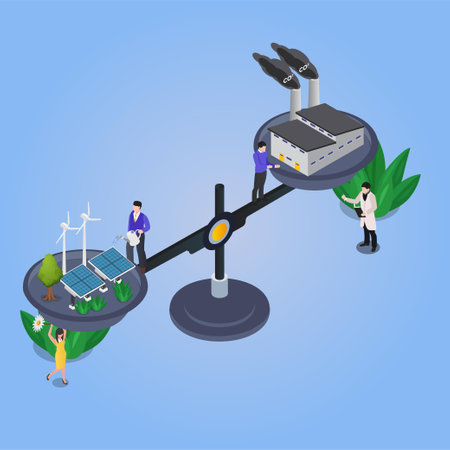1. Introduction to Hydrogen Fuel Cells
Hydrogen fuel cells are becoming an important part of the conversation about the future of clean energy in the automotive industry. These innovative systems generate electricity by combining hydrogen and oxygen, producing only water as a byproduct. This makes them a promising alternative to traditional gasoline-powered engines and even battery electric vehicles (BEVs).
How Hydrogen Fuel Cells Work
A hydrogen fuel cell consists of several key components, including an anode, a cathode, and an electrolyte membrane. Heres a simplified breakdown of how it works:
| Step | Description |
|---|---|
| 1. Hydrogen Supply | Compressed hydrogen is stored in a fuel tank. |
| 2. Electrochemical Reaction | Hydrogen enters the anode side, where it splits into electrons and protons. |
| 3. Electricity Generation | Electrons travel through an external circuit, creating an electric current. |
| 4. Water Emission | Protons combine with oxygen on the cathode side, forming water as a byproduct. |
The Role of Hydrogen Fuel Cells in the Automotive Industry
Hydrogen fuel cells offer several advantages that make them attractive for the future of transportation. Unlike internal combustion engines, they produce zero emissions. Compared to battery-powered EVs, fuel cell vehicles (FCVs) can be refueled within minutes rather than hours.
Key Benefits of Hydrogen Fuel Cells
Here are some of the main reasons why automakers are investing in hydrogen fuel cell technology:
- Zero Emissions: The only byproduct is water vapor.
- Fast Refueling: Hydrogen vehicles can be refueled in about 3-5 minutes.
- Long Range: FCVs can often travel over 300 miles on a full tank of hydrogen.
- Lightweight: Hydrogen fuel systems are lighter than large EV battery packs.
- Scalability: The technology can be applied to passenger cars, buses, and even trucks.
Current Challenges
Despite the benefits, hydrogen fuel cells face several challenges. The main issues include the high cost of production, the limited hydrogen refueling infrastructure, and the energy-intensive process of producing hydrogen. Addressing these challenges is crucial for widespread adoption.
2. Advantages of Hydrogen Fuel Cell Vehicles
Hydrogen fuel cell vehicles (FCVs) offer several key benefits that make them a promising alternative to traditional gasoline and diesel-powered cars. From zero emissions to fast refueling times, these advantages position hydrogen as a potential game-changer in the automotive industry.
Zero Emissions for a Cleaner Future
One of the biggest advantages of hydrogen fuel cell vehicles is their zero-emission nature. Unlike gasoline or diesel engines, FCVs produce only water vapor as a byproduct. This means they do not contribute to air pollution or greenhouse gas emissions, making them an environmentally friendly choice.
Fast Refueling Compared to EVs
While battery electric vehicles (BEVs) require hours to recharge, hydrogen fuel cell vehicles offer refueling times similar to conventional gasoline cars. On average, an FCV can be refueled in just 3 to 5 minutes. This provides a significant advantage for drivers who need a quick turnaround without waiting for long charging times.
High Energy Efficiency and Extended Range
Hydrogen fuel cells are highly efficient, converting more energy from fuel into usable power compared to internal combustion engines. Additionally, FCVs offer greater driving ranges compared to many battery electric vehicles. Here’s a comparison:
| Vehicle Type | Average Range (Miles) | Refueling / Charging Time |
|---|---|---|
| Hydrogen Fuel Cell Vehicle (FCV) | 300-400 | 3-5 minutes |
| Battery Electric Vehicle (BEV) | 200-300 | 30 minutes to several hours |
| Gasoline Vehicle | 350-400 | 3-5 minutes |
As shown in the table, FCVs offer a range comparable to gasoline vehicles but with the added benefit of producing zero emissions.
A Promising Technology for the Automotive Industry
With advancements in hydrogen production and infrastructure, fuel cell technology is becoming more viable. As more stations become available and production costs decrease, hydrogen fuel cell vehicles will continue to gain traction as a sustainable and convenient transportation option.

3. Challenges and Limitations
While hydrogen fuel cells hold great promise for the future of the automotive industry, several challenges must be addressed before widespread adoption can occur. The main barriers include infrastructure limitations, production costs, and hydrogen storage concerns.
Infrastructure Limitations
One of the biggest challenges facing hydrogen fuel cell vehicles (FCVs) is the lack of refueling infrastructure. Unlike gasoline stations, hydrogen fueling stations are still rare, making it difficult for consumers to rely on FCVs for daily use.
Comparison of Refueling Infrastructure
| Fuel Type | Number of Stations (USA) |
|---|---|
| Gasoline | Over 100,000 |
| Electric Charging Stations | Over 50,000 |
| Hydrogen | Fewer than 1,000 |
As shown in the table, hydrogen refueling stations are significantly fewer than gasoline or electric charging stations, creating a major barrier to adoption.
Production Costs
The cost of producing hydrogen remains high, especially for green hydrogen, which is the most environmentally friendly option. The two main sources of hydrogen production are:
Hydrogen Production Methods
- Gray Hydrogen: Produced from natural gas using steam methane reforming (SMR), but generates carbon emissions.
- Green Hydrogen: Generated using renewable energy sources through electrolysis, but is currently expensive.
Advancements in technology and increased investment are crucial for bringing down the cost of green hydrogen to make it a viable option for widespread use.
Hydrogen Storage Concerns
Storing and transporting hydrogen presents several technical challenges. Hydrogen has a low energy density compared to gasoline, meaning it must be stored under high pressure or in liquid form at extremely low temperatures.
Challenges of Hydrogen Storage
- High Pressure: Hydrogen gas must be compressed to up to 10,000 psi (pounds per square inch), requiring reinforced tanks.
- Low Temperature: Liquid hydrogen must be stored at -423°F (-253°C), which adds complexity and cost.
- Leakage Concerns: Hydrogen molecules are small and can escape through tiny cracks, posing safety risks.
Overcoming these storage challenges is essential for making hydrogen fuel cells a practical alternative to gasoline and electric vehicles.
4. Recent Developments and Innovations
Hydrogen fuel cell technology has seen significant advancements in recent years. Automakers, governments, and researchers are working together to improve efficiency, reduce costs, and expand infrastructure. Here are some of the key developments and innovations in the field.
Technological Advancements in Fuel Cell Vehicles
Fuel cell technology is evolving rapidly, making hydrogen-powered vehicles more efficient and practical. Recent improvements include:
| Advancement | Impact |
|---|---|
| Increased Fuel Cell Efficiency | Longer driving range and lower energy consumption |
| Lightweight Hydrogen Tanks | Improved vehicle performance and fuel economy |
| Faster Refueling Times | Comparable to traditional gasoline refueling |
| Cost Reductions in Production | More affordable fuel cell vehicles |
Government Initiatives Supporting Hydrogen Fuel
Governments worldwide are investing in hydrogen fuel cell development. These initiatives help reduce emissions and promote cleaner energy sources. Some key efforts include:
- Federal Incentives: The U.S. government offers tax credits and grants to encourage hydrogen vehicle production and adoption.
- Infrastructure Development: Investment in hydrogen refueling stations is expanding in states like California and New York.
- Emission Regulations: Stricter emissions policies are pushing car manufacturers to explore cleaner alternatives like hydrogen.
Automaker Investments in Hydrogen Fuel Cell Vehicles
Several major automakers are investing heavily in hydrogen fuel cell technology. These investments aim to develop new models, improve infrastructure, and make hydrogen vehicles a viable option for consumers.
Leading Companies in Hydrogen Fuel Cell Development
| Automaker | Notable Hydrogen Vehicle | Future Plans |
|---|---|---|
| Toyota | Mirai | Expanding hydrogen vehicle production and partnerships |
| Hyundai | Nexo | Developing commercial hydrogen fuel cell trucks |
| Honda | Clarity Fuel Cell | Investing in fuel cell research and battery technology |
| BMW | iX5 Hydrogen | Testing hydrogen-powered SUVs for future production |
With new technology, strong government support, and increasing investments from automakers, the future of hydrogen fuel cell vehicles looks promising. As these developments continue, hydrogen-powered cars may become a mainstream sustainable transportation option.
5. Future Outlook and Adoption Trends
Predictions for the Future of Hydrogen Fuel Cells
Hydrogen fuel cell technology is expected to play an increasingly important role in the automotive industry. As governments push for cleaner energy solutions and automakers invest in sustainable alternatives, hydrogen-powered vehicles will likely gain momentum. While battery electric vehicles (BEVs) currently dominate the zero-emission vehicle landscape, fuel cell electric vehicles (FCEVs) offer key advantages like faster refueling times and longer driving ranges, making them a viable alternative in the long run.
Potential Market Growth
The hydrogen fuel cell market is projected to grow significantly over the next decade. Continuous advancements in fuel cell technology, improvements in hydrogen production, and expanded refueling infrastructure will drive adoption. The following table highlights key factors influencing the market growth:
| Factor | Impact on Hydrogen Fuel Cell Adoption |
|---|---|
| Government Policies | Increased investments and incentives for hydrogen fuel technologies will boost market growth. |
| Infrastructure Development | Expansion of hydrogen refueling stations will make FCEVs more practical for consumers. |
| Technology Advancements | Innovations in fuel cell efficiency and hydrogen production will improve performance and cost-effectiveness. |
| Automaker Investments | More manufacturers developing FCEVs will lead to a wider range of available models. |
| Market Competition | Competition between BEVs and FCEVs will push automakers to enhance hydrogen technology. |
The Role of Hydrogen in Future Mobility
Hydrogen fuel cells have the potential to transform transportation beyond passenger vehicles. Applications in commercial trucks, buses, and even trains are already in development. With economies of scale and continuous research, costs will decrease, making hydrogen a more attractive option for consumers and businesses alike.
Key Challenges and Solutions
Despite the promising future, hydrogen fuel cells still face challenges. Addressing these obstacles will be vital for widespread adoption. The table below outlines some key challenges and their potential solutions:
| Challenge | Potential Solution |
|---|---|
| High Production Costs | Scaling up hydrogen production and improving fuel cell efficiency to reduce costs. |
| Limited Refueling Infrastructure | Government and private sector investments in hydrogen stations. |
| Consumer Awareness | Educational initiatives and marketing campaigns to promote hydrogen vehicles. |
| Competition with BEVs | Positioning FCEVs as the best option for longer-range driving and heavy-duty vehicles. |
Looking Ahead
The future of hydrogen fuel cells in the automotive industry looks promising as investment and innovation continue. As production costs drop and infrastructure expands, adoption rates will rise, making hydrogen a key player in the transition to clean energy transportation.

